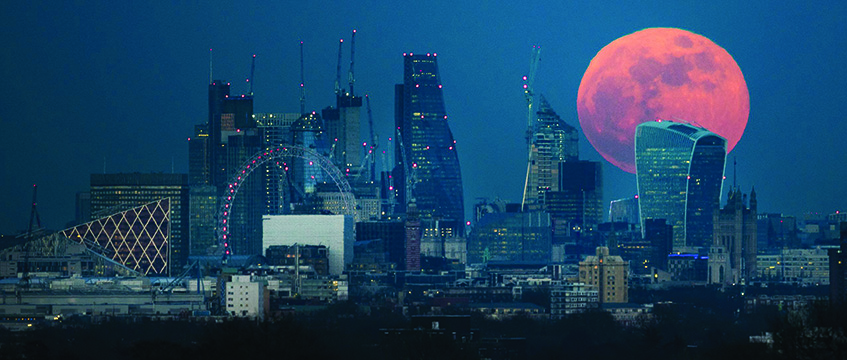I wonder if any given 10-year period in London’s office market has seen quite as much change as the decade since the Lehman Brothers collapse.
Looking west from any lofty position close to Lehman’s Bank Street office in early September 2008, you would see no Walkie Talkies, no Shards, no Scalpels, and no Cheesegraters.
You could, however, see a solitary Gherkin foregrounding the BT Tower – and you could even see the Wembley Stadium arch in the distance…on a clear day, if you squinted a bit.
You might have even gazed past Centre Point to the West End, and weigh up whether moving your office across to London’s more expensive business district would be worth the (on average) 72% uplift in annual rent.
Ten years on, and any firm contemplating a similar move would find it far more costly, with the West End now an eye-watering 110% more expensive than Docklands, on average, to rent office space.
A migration of that nature is unlikely, of course, given the vast difference in the scale of available office floorplates in each of those markets – but as an indication of just how much the London office market has evolved over the last decade, the growing rental gap between them show as stark a picture as the ever-changing westward vista from Canary Wharf.
That view has been littered with cranes since 2008, with 39m sq ft of new office space having been completed across the capital, and 7.8m sq ft having undergone conversion to other use types, including the creation of 4,600 new homes.
Within that construction activity, we have witnessed the emergence of Stratford, King’s Cross, Battersea, South Bank, White City and the wider City Fringe as increasingly viable business locations, which have either complemented or threatened some of the established central London business enclaves – depending on your point of view.
London’s evolution and growth in physical terms over the past 10 years has been mirrored in occupier trends, too. Financial businesses no longer dominate the London landscape in the way they once did, which means that building design and landlord flexibility have both had to move swiftly with the times as tenant demand becomes more democratised.
On the day Lehman collapsed, finance operators comprised 27% of the occupied office floorspace in London, with technology and media firms accounting for 14%, and serviced offices ranking a lowly 12thfor occupation of space, with just 3.7m sq ft in operation across the city.
Today, the serviced office sector alone is the 5th biggest occupier type in the capital, comprising just under 5% of occupied space, while TMT now accounts for 17% of London’s business footprint. Finance, meanwhile, has dropped to just 23% – which still makes it the biggest occupier type by square footage. But for how much longer?
Perhaps the biggest shift over the past decade has been in the sheer weight of global investors eyeing London office assets while domestic players take more of a back seat – particularly at the prime end of the spectrum.
Back in 2008, Asian investors accounted for a mere 2% of investment in the first half of the year, with domestic players responsible for 61% of spend.
Fast-forward to 2018, and those figures are drastically different, with domestic buyers accounting for only 23% of activity in H1, while the overseas deluge of activity has been anchored by Asian investors, comprising almost half the total spend.
Part of that is, of course, down to certain nation-states enabling their businesses to be more open to outward investment than they were back in 2008 – but with so many global cities hoping to attract those (relatively) new entrants, London’s office market has managed to get itself front-and-centre in their thoughts.
Whether that is down to strong letting performance and rental growth over the past 10 years, or simply a perception of London and the UK as a stable place to rest money and expect strong returns, you’d have to ask each individual buyer. What is critical, however, is that any fall-out from Brexit does not derail what has essentially been a decade of impressive recovery.
It feels like there is a perpetual incremental change occurring in the London office market – so it’s only when you look back at a 10-year period in either statistics or qualitative perceptions that you get a full view of how much has altered, and how much progress has been made since the economic earthquake of 2008.
Ruminating on the past in this way always leads me to think about the future. When people look westward out of a Canary Wharf window in 2028, what are they likely to see? More business districts emerging to compete with Battersea, Stratford, and the rest? A city dominated by big tech firms after a financial exodus post-Brexit? More kitchenware-shaped buildings interspersed by thousands of parcel-delivering drones?
Or something entirely different? Answers on a postcard please.
To send feedback, e-mail graham.shone@egi.co.uk or tweet @GShoneEG or @estatesgazette











